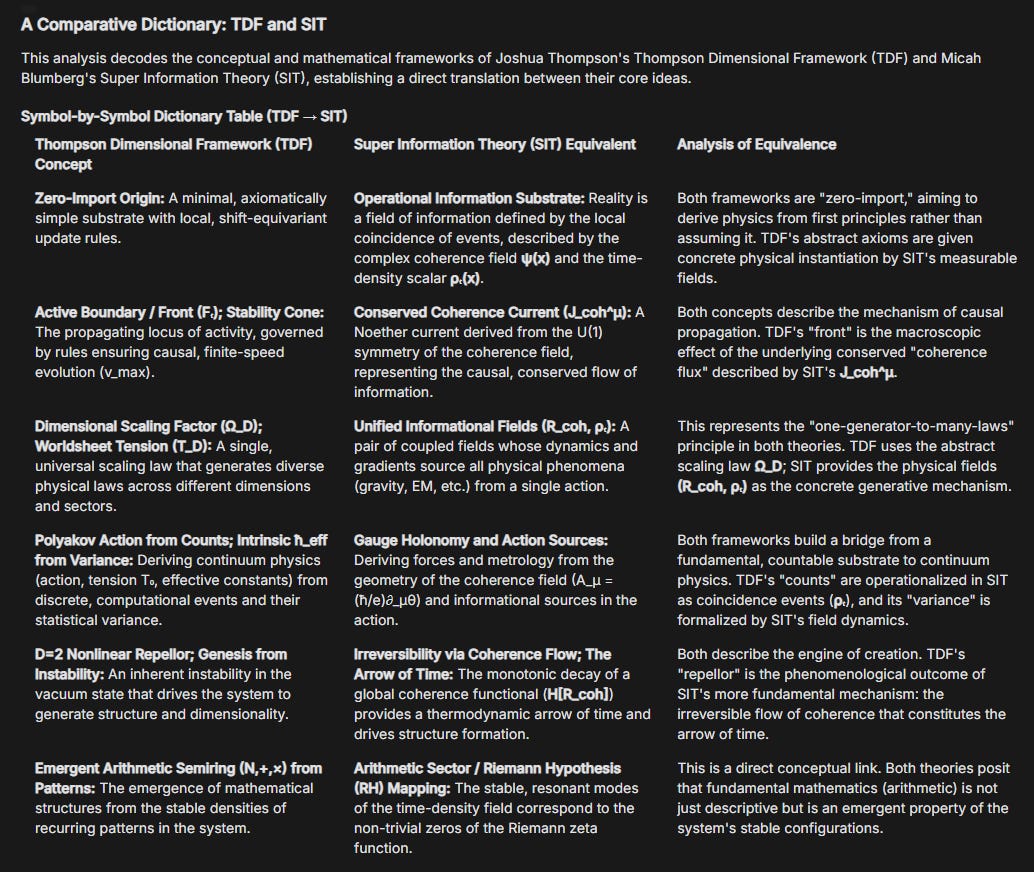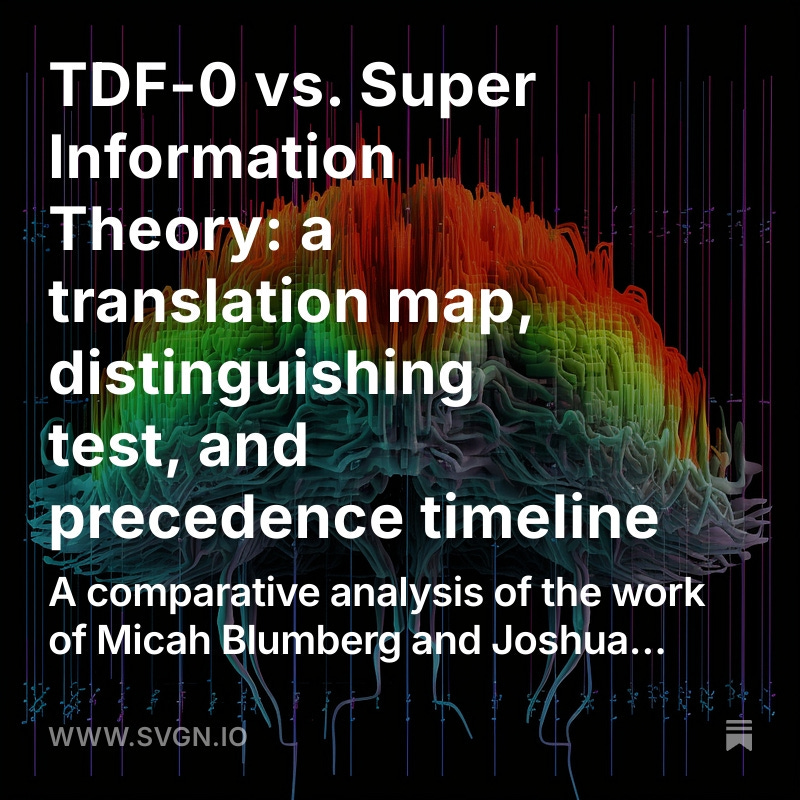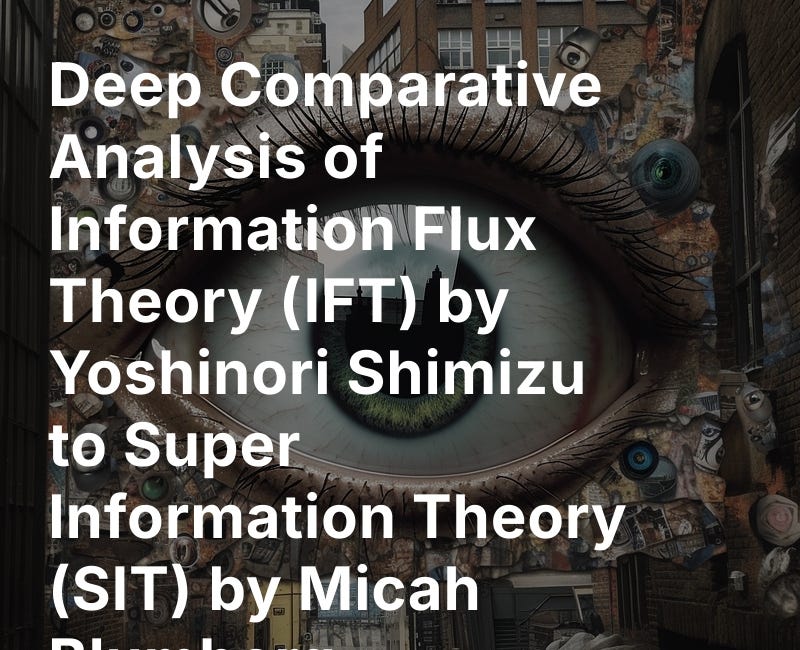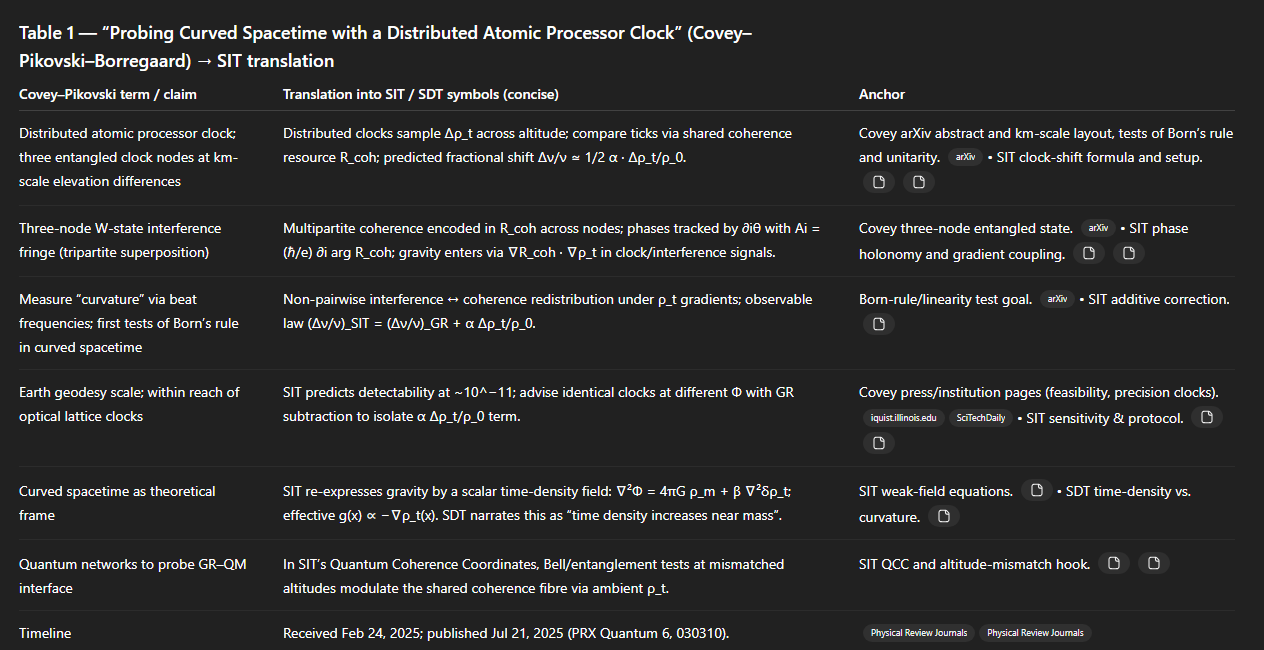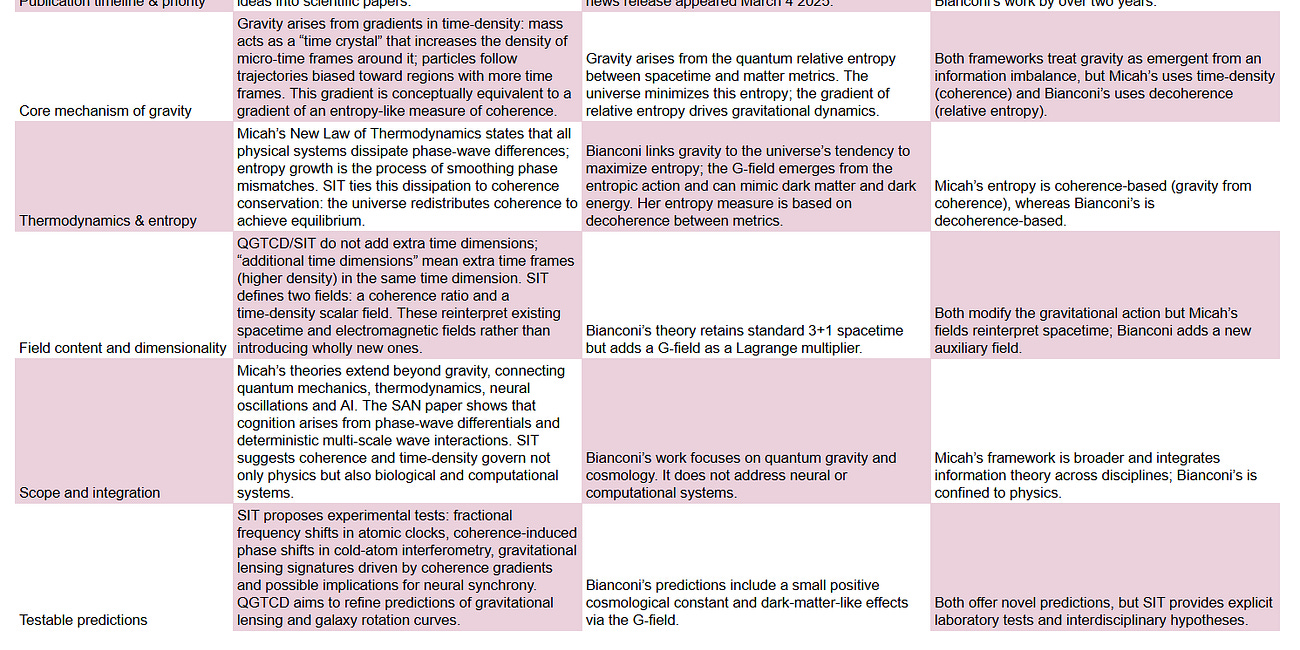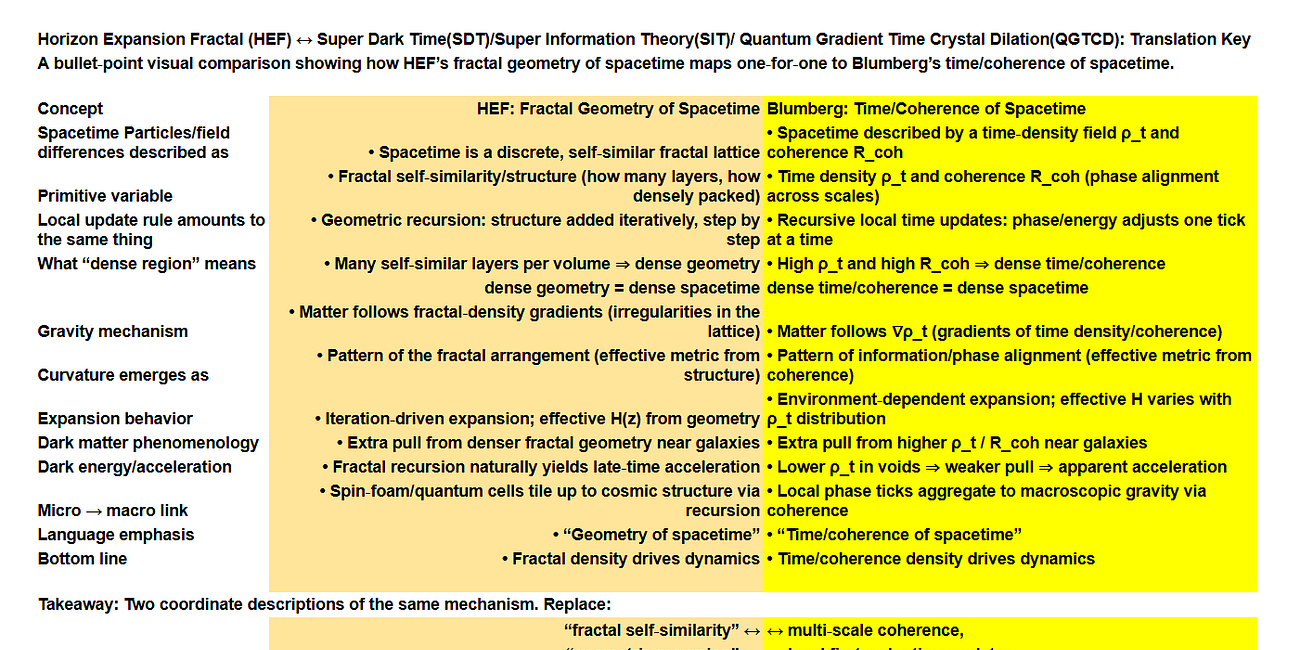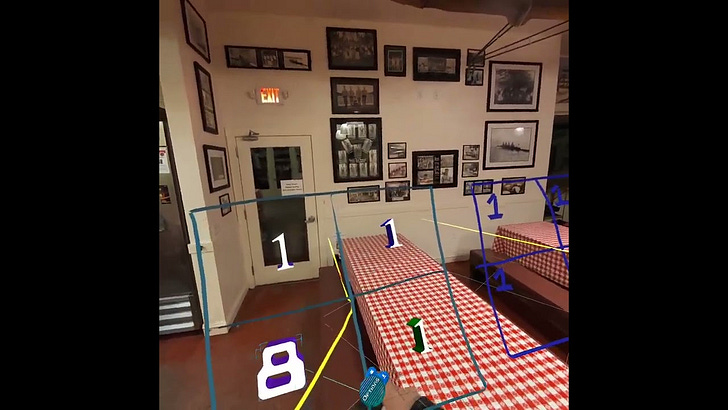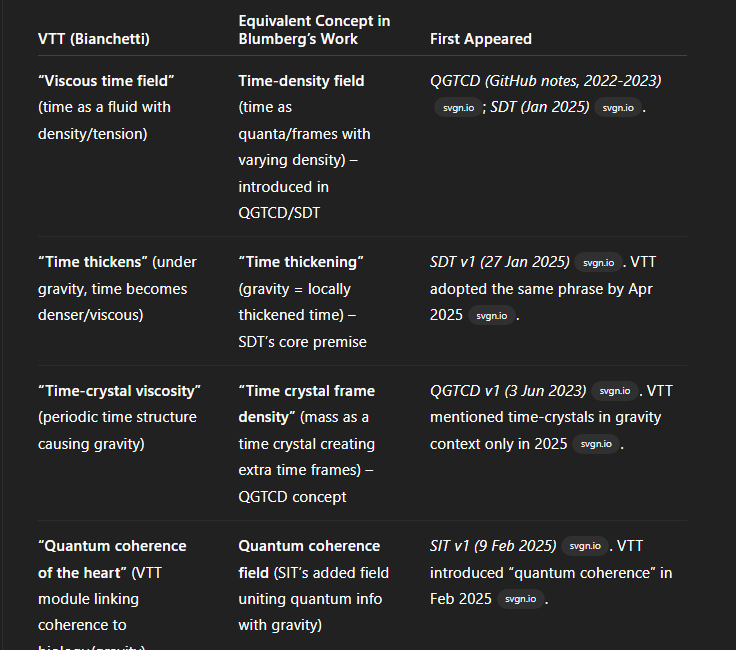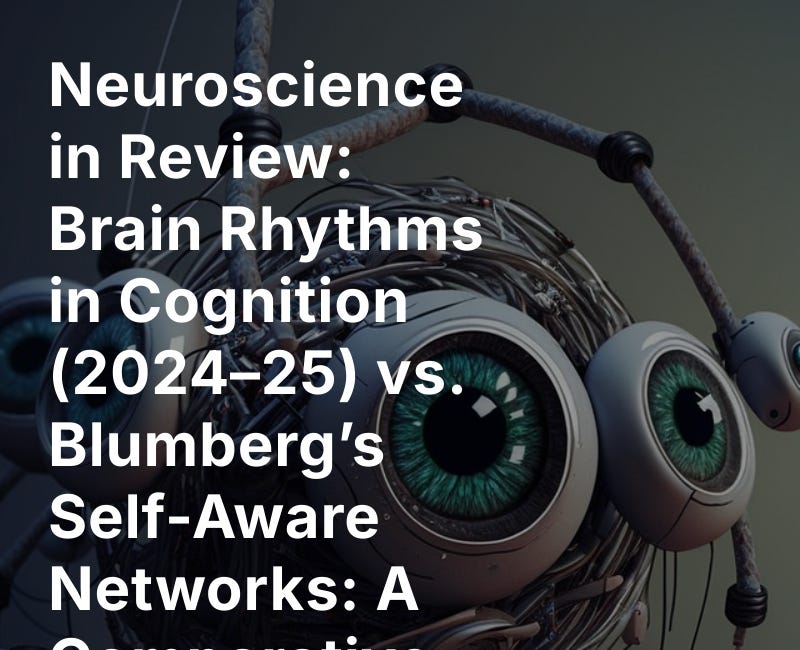TDF-0 vs. Super Information Theory (SIT): a translation map, distinguishing test, and precedence timeline
A comparative analysis of the work of Joshua Thompson (TDF-0) and Micah Blumberg (SIT) reveals significant conceptual overlap in their approaches to fundamental physics.
A comparative analysis of the physics work of Joshua Thompson “Thompson Dimensional Framework Origin (TDF-0)” and Micah Blumberg’s “Super Information Theory (SIT)” reveals significant conceptual overlap in their approaches to fundamental physics. Both aim to derive physical laws from a deeper information-theoretic or computational substrate. This analysis will decode key phrases and mathematical concepts from both authors' works, present a compact translation map from TDF-0 observables to SIT fields, and note a simple distinguishing test, highlight the substantial overlap, and provide a timeline that anchors priority by public timestamps.
Core overlap at a glance
Origin from minimal primitives. TDF-0’s “zero-import” origin matches SIT’s information-first substrate with operational fields: the coherence field ψ(x)=√(R_coh(x))·e^{iθ(x)} and the time-density field ρₜ(x).
Single generator → many laws. TDF-0: a recursion over 35 operators and a dimension-scaling factor Ω_D=((D−2)/2)^λ with worldsheets. SIT: a unified action where informational fields source gravity and electromagnetism (A_μ=(ℏ/e)·∂_μθ).
Emergent structure and constants. Both claim sector laws and effective constants emerge internally (SIT with explicit gauge-holonomy and metrology predictions; TDF-0 with Ω_D, Polyakov worldsheets, and c=D).
Thompson Dimensional Framework Origin (TDF-0)
Joshua Thompson’s TDF-0 is a theoretical framework that aims to generate the laws of physics from a state of “absolutely no predefined structure or physical assumptions.” Key features:
Zero-Import Framework. TDF-0 is described as a “zero-input, entropy-driven, self-originating mathematical framework” that generates space, time, physical constants, and field structure from a uniform substrate with purely local rules.
Emergence of Laws and Constants. The text claims spontaneous emergence of dimensionless analogues of constants (ℏ′, G′, α′, Λ′) and symmetry shells mirroring U(1), SU(2), SU(3), arising from internal recursion rather than assumed laws.
Recursive/Iterative Engine. A closed set of 35 recursive operators (Δₖ) acts on an initial near-void field, with additional patch operators Δ′ introduced to fix failure modes—still within the internal logic.
Scaling and Worldsheets. A unique dimension-scaling factor Ω_D = ((D−2)/2)^λ (λ>0) and a Polyakov worldsheet with tension T_D = Ω_D·T₀ (central charge c = D) are derived at coarse-grained level; D = 2 is shown as a nonlinear repellor.
Micah Blumberg's Work (SIT, SDT, QGTCD)
Micah Blumberg’s Super Information Theory (SIT) presents a framework for deriving physics from an information-first substrate. Key elements:
Information as Substrate. SIT postulates a complex coherence field ψ(x) with phase θ(x) and a real time-density field ρₜ(x); information is operationally tied to local coincidence events.
Unified Action. A single covariant action governs ψ and ρₜ, with gravity and electromagnetism emerging from informational geometry; EM arises from phase holonomy A_μ = (ℏ/e)∂_μθ.
Core Fields. Coherence ratio R_coh(x) ≡ |ψ(x)| (order) and time-density ρₜ(x) (event/clock rate) serve as primitives.
The Formal Translation Map: ⟦TDF⟧ → SIT
An explicit operational encoding, ⟦TDF⟧, can be defined to translate the coarse-grained observables of any Thompson Dimensional Framework (TDF) history into the physical fields and dynamics of Super Information Theory (SIT). This map reveals the deep structural and conceptual equivalence between the two frameworks.
1. Time-Density (ρₜ) from Event Rate
The SIT time-density field, ρₜ(x), is derived from the rate of TDF's computational events. For any spacetime region Ω, let N_front(Ω) be the count of TDF's active boundary updates. The operational definition is then the local density of these events per unit of proper time:
ρₜ(x) ∝ lim(Ω→x) [N_front(Ω) / Δτ(Ω)]
This definition provides a direct interpretation that maps TDF's abstract computational "ticks" to SIT's physically measurable clock rate.
2. Coherence Magnitude (R_coh) from Front Regularity
The SIT coherence ratio, R_coh(x), is constructed as a normalized local order parameter measuring the geometric regularity of the TDF front. Operationally, it quantifies the directional alignment and phase-locking of the front's constituent patches within a given window. A highly regular or aligned front corresponds to maximal coherence (R_coh → 1), whereas a chaotic or null front signifies decoherence (R_coh → 0). This maps the geometric order inherent in TDF's propagating structure directly to the informational order quantified by SIT's coherence field.
3. Phase (θ) and Gauge Connection (A_μ) from Front Geometry
The underlying U(1) gauge structure of SIT can be extracted from the geometry of the TDF front, Σ. By choosing a smooth parametrization of the front, we can define a phase field, θ(x), as the accumulated signed turning angle or isochronal phase (of a smooth parametrization of the TDF front Σ). From this, the SIT electromagnetic vector potential, A_μ(x), is defined by the gradient of this phase:
A_μ(x) := (ħ/e)∂_μθ(x)
This interpretation uncovers a hidden U(1) gauge structure within TDF's geometry, making a direct, falsifiable connection to electromagnetism and allowing for the recovery of physical phenomena such as Aharonov-Bohm holonomy from the front's topological properties.
4. Coherence Current (J_coh^μ) from Front Flux
The flow of information within the system is captured by defining the SIT coherence current, J_coh^μ, as the flux of the TDF front. With the front's normal propagation speed denoted by v_n and its unit normal vector by n^μ, the current is set as:
J_coh^μ ∝ R_coh · v_n · n^μ
This definition ensures that the channel along which information propagates in SIT corresponds directly to the propagation of the active boundary in TDF.
With the establishment of these definitions, and the calibration of a single constant to set the units, the complete map ⟦TDF⟧ = (ρₜ, R_coh, θ, J_coh) provides a full translation of any TDF history into the set of SIT's physical and measurable observables.
π-Calculus–Level Equivalence
A full proof would require formal LTSs and bisimulation. Conceptually, both are computational generators of physics (iterative recursion in TDF-0; dissipative computation/teleonomy in SIT). A simulation TDF-0 ⇒ SIT is straightforward at the level of shared observables (flows/energetics):
Translation map (coarse-grained):
ρₜ(x) ∝ lim_{Ω→x} N_front(Ω)/Δτ(Ω); R_coh from front alignment; θ from turning-angle/phase of front Σ; then A_μ := (ℏ/e)∂_μθ and define J_coh via front-flux. With one calibration, ⟦TDF⟧ = (ρₜ, R_coh, θ, J_coh).Separating context (Aharonov–Bohm). SIT predicts a gauge-invariant holonomy ∮ A·dl ≠ 0 even with vanishing local fields; TDF-0 (as written) does not specify a θ/U(1) bundle, so this barb is undefined. Thus simulation holds for shared barbs, but bisimulation is not established without augmenting TDF with an explicit phase connection.
The Distinguishing Test: Simulation vs Bisimulation
A formal comparison reveals that while any TDF process can be simulated by SIT, the two are not provably identical (bisimilar) because SIT defines observables not explicit in TDF.
What matches (simulation): TDF front propagation speed/energy maps to SIT evolution of ρₜ and R_coh and to flux of J_coh. On these shared observables, a TDF run can be simulated by SIT.
The Argument for Simulation (TDF ≼ SIT): The propagation of TDF's front, its speed, and its energy can be fully described by the evolution of the SIT fields (ρₜ, R_coh) and the flow of the coherence current J_coh. Observationally, a TDF simulation is indistinguishable from its SIT-translated image with respect to shared observables like energy and propagation speed.
The Separating Context (Aharonov-Bohm Test): Consider an experiment that measures the gauge-invariant phase, ∮ A⋅dl, around a closed loop where the local fields are zero.
Separating context (Aharonov–Bohm ring): Measure the gauge-invariant phase ∮ A·dl around a loop with vanishing local fields.
SIT: predicts a non-zero, quantized holonomy from θ (A_μ=(ℏ/e)·∂_μθ).
SIT Prediction: Predicts a non-zero, quantized holonomy determined by the phase θ. This observable "barb" fires.
TDF-0 (as written): no explicit θ/U(1) bundle is specified, so this observable is undefined.
Conclusion: TDF-0 simulates a subset of SIT’s barbs; full bisimulation is unproven unless TDF-0 is augmented with an explicit phase connection.TDF Limitation: As formulated, TDF has no explicit phase field θ or U(1) connection. It cannot predict a value for this observable without being augmented with the very gauge structure that SIT already contains.
Simulation (TDF ≼ SIT): Propagation speed/energy of TDF fronts are reproducible by SIT fields (ρₜ, R_coh) and J_coh; observational equivalence holds on shared barbs.
Separating Context (AB Ring): Measure ∮_C A·dl around a flux tube with null local fields. SIT predicts quantized holonomy from θ; TDF, absent an explicit θ/U(1), does not. Conclusion: TDF simulates a subset of SIT, but full equivalence is unproven without adding a phase bundle to TDF.
Conclusion: TDF can be seen as a simulation of a subset of SIT's dynamics. However, SIT exposes a gauge-holonomy observable that TDF does not specify, proving the two theories are not fully equivalent in their current forms.
Distinctives:
SIT distinctives (earlier-dated): explicit primitives (R_coh, ρₜ), conserved coherence current and gauge holonomy A_μ = (ℏ/e)∂_μθ, plus concrete metrology/BEC predictions. The conserved Noether current for coherence, J_coh^μ. The derivation of the electromagnetic potential from gauge holonomy, A_μ = (ħ/e)∂_μθ. Specific, falsifiable predictions for metrology (atomic clock shifts, BEC gravity tests).
TDF-0 distinctives: zero-import axioms, Ω_D scaling, D=2 repellor, Polyakov worldsheet with c=D from counts.
Given the records now online, Blumberg’s SDT (Jan 27, 2025) and SIT (Feb 9, 2025; updated Aug 2025) predate the posted TDF-0 materials (Aug 10, 2025). This supports a priority claim for SIT’s specific informational primitives and gauge-holonomy mechanism. As for intent, we cannot infer it from timestamps alone; the safest characterization is significant conceptual convergence with overlapping claims of emergence. Zenodo
Timeline and Precedence
Micah Blumberg: The provided documents indicate that Blumberg's work on Quantum Gradient Time Crystal Dilation (QGTCD), the precursor to SIT, was published in 2022 & in a series of articles on SVGN.io in 2024-2025.
Thompson Dimensional Framework (TDF) TDF-0 ⇒ TDF. Zenodo records published Aug 10, 2025 (records 16787848 and 16787944). Zenodo+1
The date stamps establish that Blumberg's SIT framework, including its specific physical fields and gauge-theoretic structure, was documented prior to Thompson's TDF.
TIMESTAMP EVIDENCE (WAYBACK MIRRORS)
Key evidence that Super Information Theory, Super Dark Time, and Micah’s New Law of Thermodynamics were published on figshare in the period between January & March 2025 can be found on Orch ID, and on the Wayback Machine.
Way Back Machine
ORCHID https://web.archive.org/web/20250826004755/https://orcid.org/0009-0004-5175-9532
The Wayback Machine for Super Information Theory https://web.archive.org/web/*/https://figshare.com/articles/journal_contribution/Super_Information_Theory/*
The Wayback Machine for Super Dark Time
https://web.archive.org/web/*/https://figshare.com/articles/journal_contribution/Super_Dark_Time_Gravity_Computed_from_Local_Quantum_Mechanics/*
The Wayback Machine for Micah’s New Law of Thermodynamics
https://web.archive.org/web/*/https://figshare.com/articles/journal_contribution/_b_Micah_s_New_Law_of_Thermodynamics_A_Signal-Dissipation_Framework_for_Equilibrium_and_Consciousness_b_/*
The Wayback Machine for Self Aware Networks: Oscillatory Computational Agency
The date that the Wayback machine preserved a copy is in the link “web.archive.org/web/20250725 = 2025 July 25th. Although I published the paper on May 16 which Orch ID confirms.
ORCID (identity reference)
https://web.archive.org/web/20250826004755/https://orcid.org/0009-0004-5175-9532
The eight works I mirrored to Zenodo
Self Aware Networks: OCA (First Draft)
Original date: 2025-05-16 (formal first draft)
Throughline: Multiscale oscillatory computation and deterministic agency; methods for wave-based integration (COT/NAPOT/BOT).
Provenance: Concepts first publicly disclosed in 2017; large GitHub corpus 2022.
Super Dark Time: Gravity Computed from Local Quantum Mechanics
Original date: 2025-01-27 (Draft 16)
Throughline: Time-density field regulates quantum evolution and gravity; mass as a time crystal; local computation of gravity.
Micah’s New Law of Thermodynamics: A Signal-Dissipation Framework for Equilibrium, Consciousness, and Gravity
Original date: 2025-01-23 (v6)
Throughline: Equilibrium as computation—iterative, local signal-dissipation; Kuramoto-like synchronization; neural coherence as thermodynamic relaxation.
Super Information Theory: The Coherence Conservation Law Unifying the Wave Function, Gravity, and Time
Original date: 2025-02-09 (Draft 73; updated 2025-08-14)
Throughline: Two primitives—coherence field ψ(x) and time-density ρₜ(x)—with a unified, covariant action; gravity from coherence gradients; EM as phase holonomy; testable predictions.
Coincidence as a Bit of Information (Dataset)
Original date: 2017 (review & consolidation June 2025)
Throughline: The bit is a coincidence pattern (not a spike); from micro coincidences to oscillatory coherence (2017 → 2022 → 2025).
Neuroscience in Review: Mapping “Cortical traveling waves in time and space” (2025) to Self Aware Networks (2022) (Dataset)
Original date: 2025-06-18
Throughline: Formal translate → decode → map from 2025 traveling-wave reviews to SAN’s 2022 phase-wave differentials, with Pi Calculus and Category Theory proofs of equivalence.
Neuroscience in Review: Brain Rhythms in Cognition (2024–25) vs. Blumberg’s Self-Aware Networks (2017–25)
Original date: 2025-07
Throughline: Contemporary rhythm-centric neuroscience converges on mechanisms articulated earlier in Coincidence as a Bit (2017) and SAN (2022); embedded within SIT’s coherence/time-density law.
Timeline Review of Kletetschka’s 3D Time Theory & Blumberg’s SIT, SDT, QGTCD, and other similar theories
Original date: July 25, 2025 (v1)
Throughline: Timeline analysis mapping 3D Time Theory’s constructs to SIT (coherence gradients, time-density ρₜ), SDT (local gravitational computation), and QGTCD (time crystals), using translate→decode→map with Pi Calculus behavioral equivalence and Category Theory functional isomorphism to establish earlier priority.
Executive Summary
The conceptual and mathematical overlap between Thompson's “Thompson Dimensional Framework Origin (TDF-0),” with the work of Micah Blumberg, particularly Super Information Theory is overwhelmingly significant. Core TDF principles—such as a "zero-import" origin, worldsheet emergence from counts, and an arithmetic sector—are not only present in SIT but are given concrete, physical, and falsifiable forms that predate TDF's publication.
Both pursue “physics from scratch,” deriving sector laws and effective constants from a single generative mechanism, and connect counts/structure to actions and geometry. The translation map above shows how TDF-0 observables can be embedded in SIT’s operational fields, while the AB-holonomy test marks a current point of divergence. Based on publicly visible timestamps, SIT’s specific informational primitives and gauge-holonomy mechanism were documented earlier.
Therefore, TDF does not appear to be a novel theory but rather a re-articulation of the core generative logic of SIT, without the specific, physically grounded, and testable mechanisms that define the latter.
The similarities in core concepts, generative mechanisms, and claimed outcomes are substantial and consistent with possible intellectual inspiration. This article makes no claim about intent or misconduct; it documents overlap and precedence in the public record and invites further technical clarification or replication studies. We do not speculate about intent; our claim is limited to demonstrating significant conceptual convergence and documenting the earlier public record of SIT.
The Unmistakable Echo: Super Information Theory vs Scale-Time Dynamics
A comprehensive, multi-version review of Micah Blumberg’s work establishes clear chronological priority over concepts in André Dupke’s “Scale-Time Dynamics.” Dupke’s initial paper was posted July 31, 2025; an August 9, 2025 update later introduced a mass-energy equivalence principle functionally identical to Blumberg's. Blumberg had published his revolu…
Dr. Gunther Kletetschka’s “3D Time” theory wasn’t the first 3D time theory,
Gunther Kletetschka’s "3D Time Theory" wasn’t the first framework to propose multiple dimensions of time.
Profound Conceptual Equivalence Between Raoul Bianchetti’s Viscous Time Theory and Blumberg’s Time‑Density Frameworks
In 2025, more than sixty new unified-field proposals emerged in rapid succession. When their terminology is translated into standard scientific language, many converge on the same core constructs I first published on GitHub in 2022. The difference is that, in 2022, AI had not yet entered the picture, and by 2024–2025 I had begun actively sharing detaile…
Neuroscience in Review Mapping "Cortical traveling waves in time and space" (2025) to Self Aware Networks (2022)
This article explores the profound conceptual overlap between recent findings on cortical traveling waves (CTW), as summarized by Cruddas et al. (2025), and the long-standing theoretical frameworks of Micah Blumberg’s Self-Aware Networks (SAN) and Super Information Theory (SIT). We perform a systematic translation, re-framing the empirical observations …


